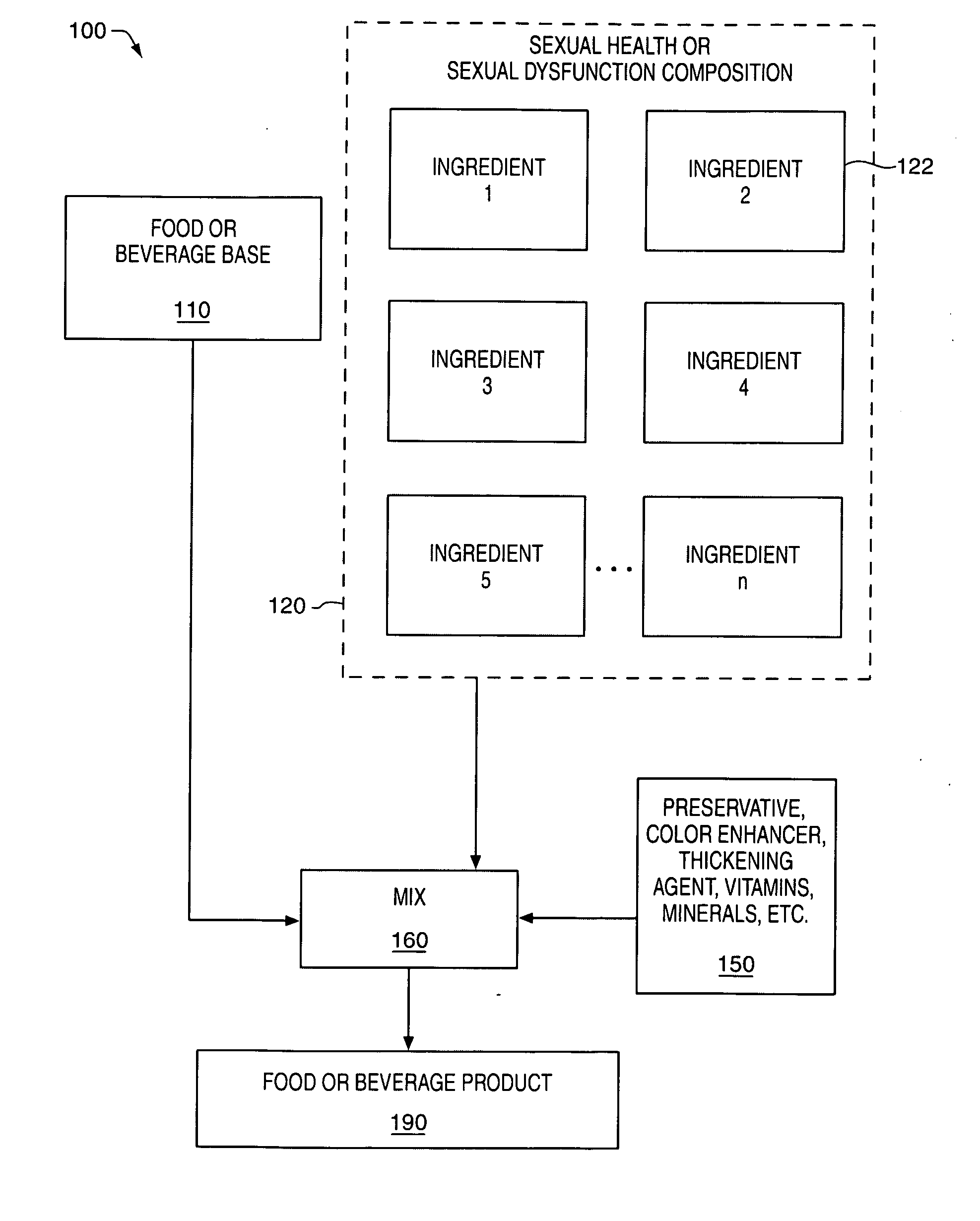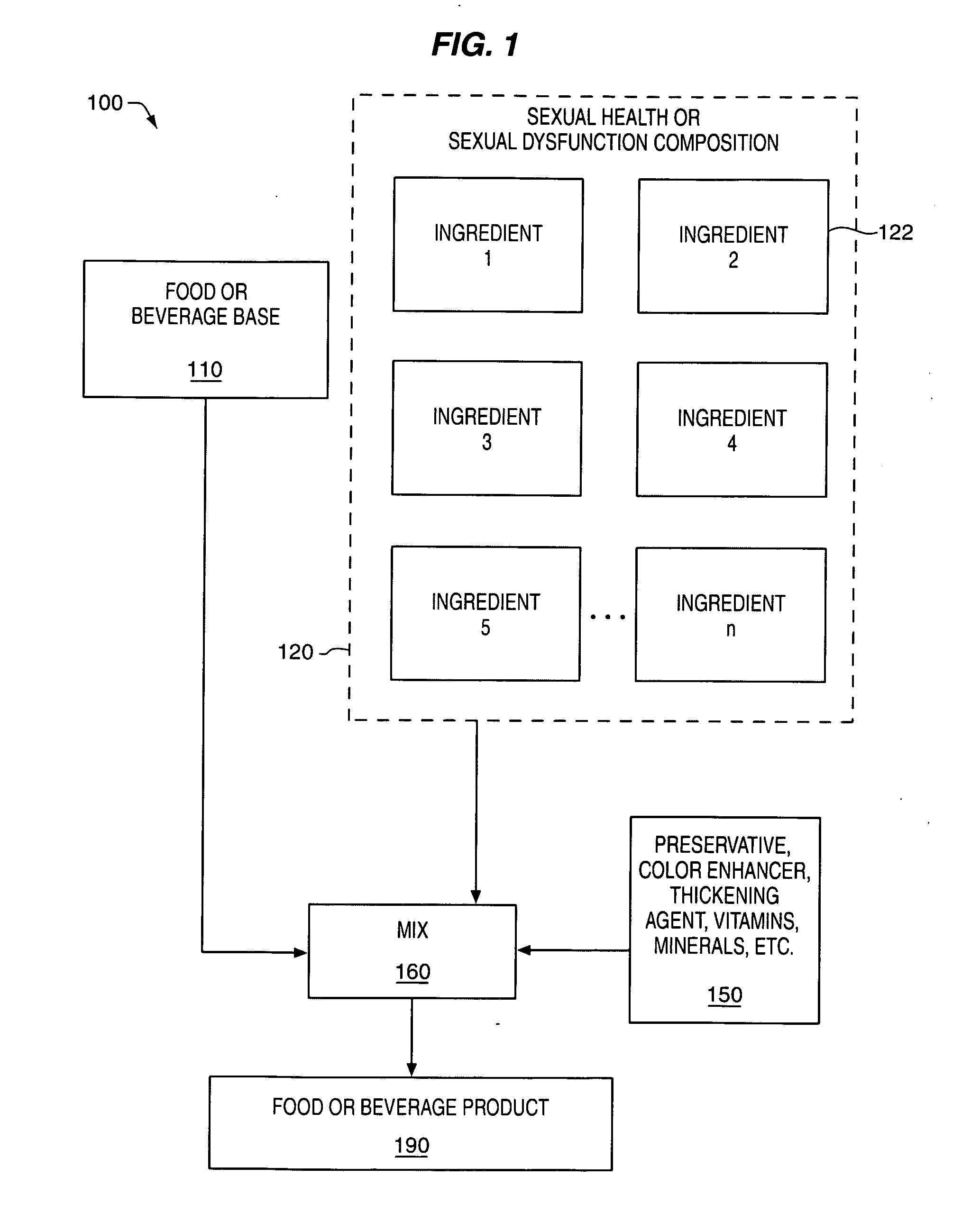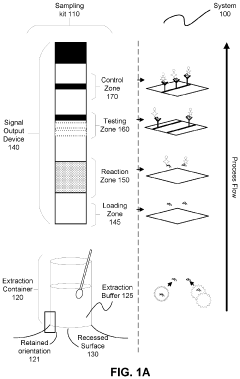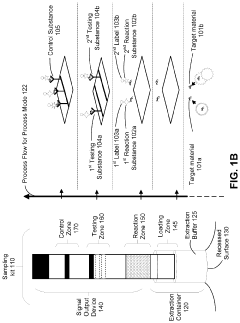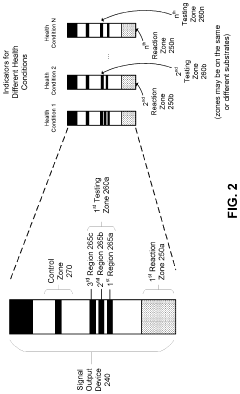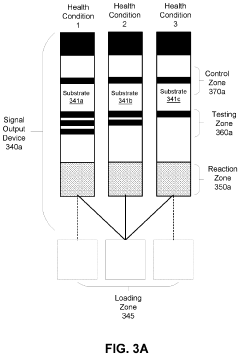Analysis of Bioresonance's Impact on Libido and Sexual Health
AUG 11, 20259 MIN READ
Generate Your Research Report Instantly with AI Agent
Patsnap Eureka helps you evaluate technical feasibility & market potential.
Bioresonance and Sexual Health: Background and Objectives
Bioresonance therapy, a controversial alternative medicine practice, has gained attention in recent years for its purported effects on various aspects of health, including sexual wellness. This emerging field of study aims to explore the potential impact of bioresonance on libido and sexual health, addressing a growing interest in non-pharmacological approaches to sexual well-being.
The concept of bioresonance is rooted in the belief that all living organisms emit electromagnetic frequencies. Proponents of this therapy claim that these frequencies can be detected, analyzed, and manipulated to diagnose and treat various health conditions. In the context of sexual health, bioresonance practitioners suggest that the therapy can help balance hormones, reduce stress, and improve overall sexual function.
As we delve into this topic, it is crucial to understand the historical context of bioresonance and its evolution in the field of alternative medicine. Developed in the 1970s by German physician Franz Morell, bioresonance therapy has since expanded its applications to encompass a wide range of health concerns. However, its use in addressing sexual health issues is a relatively recent development, reflecting a broader trend towards holistic approaches to sexual wellness.
The primary objective of this technical research report is to critically examine the existing evidence and theoretical foundations supporting the use of bioresonance in enhancing libido and sexual health. We aim to provide a comprehensive analysis of the current state of research, identifying potential mechanisms of action, and evaluating the validity of claims made by proponents of this therapy.
Furthermore, this report seeks to explore the technological aspects of bioresonance devices used in sexual health applications. This includes an examination of the principles behind frequency detection and modulation, as well as the specific protocols employed in treating sexual dysfunction or enhancing sexual wellness. By doing so, we hope to shed light on the technical feasibility and limitations of bioresonance in this context.
It is important to note that the field of bioresonance, particularly in relation to sexual health, remains controversial within the scientific community. Many mainstream medical professionals and researchers express skepticism about the efficacy and scientific basis of this therapy. Therefore, a key aspect of this report will be to critically assess the quality of available studies, identify gaps in current knowledge, and highlight areas where further rigorous research is needed.
As we proceed with this analysis, we will maintain a balanced and objective approach, considering both the potential benefits and limitations of bioresonance in the realm of sexual health. This report aims to provide valuable insights for researchers, healthcare professionals, and policymakers interested in understanding the intersection of alternative therapies and sexual wellness.
The concept of bioresonance is rooted in the belief that all living organisms emit electromagnetic frequencies. Proponents of this therapy claim that these frequencies can be detected, analyzed, and manipulated to diagnose and treat various health conditions. In the context of sexual health, bioresonance practitioners suggest that the therapy can help balance hormones, reduce stress, and improve overall sexual function.
As we delve into this topic, it is crucial to understand the historical context of bioresonance and its evolution in the field of alternative medicine. Developed in the 1970s by German physician Franz Morell, bioresonance therapy has since expanded its applications to encompass a wide range of health concerns. However, its use in addressing sexual health issues is a relatively recent development, reflecting a broader trend towards holistic approaches to sexual wellness.
The primary objective of this technical research report is to critically examine the existing evidence and theoretical foundations supporting the use of bioresonance in enhancing libido and sexual health. We aim to provide a comprehensive analysis of the current state of research, identifying potential mechanisms of action, and evaluating the validity of claims made by proponents of this therapy.
Furthermore, this report seeks to explore the technological aspects of bioresonance devices used in sexual health applications. This includes an examination of the principles behind frequency detection and modulation, as well as the specific protocols employed in treating sexual dysfunction or enhancing sexual wellness. By doing so, we hope to shed light on the technical feasibility and limitations of bioresonance in this context.
It is important to note that the field of bioresonance, particularly in relation to sexual health, remains controversial within the scientific community. Many mainstream medical professionals and researchers express skepticism about the efficacy and scientific basis of this therapy. Therefore, a key aspect of this report will be to critically assess the quality of available studies, identify gaps in current knowledge, and highlight areas where further rigorous research is needed.
As we proceed with this analysis, we will maintain a balanced and objective approach, considering both the potential benefits and limitations of bioresonance in the realm of sexual health. This report aims to provide valuable insights for researchers, healthcare professionals, and policymakers interested in understanding the intersection of alternative therapies and sexual wellness.
Market Analysis for Bioresonance in Sexual Health
The market for bioresonance in sexual health is experiencing significant growth, driven by increasing awareness of holistic approaches to wellness and a growing demand for non-invasive treatments. As consumers become more health-conscious and seek alternative therapies, bioresonance has emerged as a promising option for addressing libido and sexual health concerns.
The global sexual wellness market, which includes bioresonance therapies, is projected to reach substantial value in the coming years. This growth is attributed to factors such as changing attitudes towards sexual health, increasing prevalence of sexual disorders, and a shift towards preventive healthcare. Within this broader market, bioresonance for sexual health represents a niche but rapidly expanding segment.
Demographic trends are playing a crucial role in shaping the market demand for bioresonance in sexual health. An aging population in many developed countries has led to an increased incidence of age-related sexual health issues, creating a larger potential customer base for bioresonance therapies. Additionally, younger generations are showing greater openness to alternative and complementary therapies, further driving market growth.
The market is also benefiting from technological advancements in bioresonance devices, making them more user-friendly and accessible to a wider range of consumers. This has led to an increase in home-use devices, expanding the market beyond clinical settings.
Geographically, Europe currently leads the market for bioresonance in sexual health, with Germany and Switzerland being key markets due to their long-standing acceptance of alternative therapies. North America is showing rapid growth, driven by increasing consumer interest in holistic health approaches. Asia-Pacific is emerging as a promising market, with countries like China and India showing growing interest in bioresonance therapies.
The competitive landscape of the bioresonance market for sexual health is characterized by a mix of established medical device companies and specialized alternative therapy providers. Key players are focusing on research and development to enhance the efficacy of their devices and expand their application in sexual health.
Despite the growing market, challenges remain. These include skepticism from traditional medical communities, varying regulatory landscapes across different countries, and the need for more comprehensive clinical studies to validate the effectiveness of bioresonance in treating sexual health issues.
Looking ahead, the market for bioresonance in sexual health is expected to continue its growth trajectory. Factors such as increasing stress levels, environmental toxins, and lifestyle-related health issues are likely to drive more individuals towards alternative therapies like bioresonance. The integration of bioresonance with other complementary therapies and the potential for personalized treatment plans are areas that could further expand the market in the coming years.
The global sexual wellness market, which includes bioresonance therapies, is projected to reach substantial value in the coming years. This growth is attributed to factors such as changing attitudes towards sexual health, increasing prevalence of sexual disorders, and a shift towards preventive healthcare. Within this broader market, bioresonance for sexual health represents a niche but rapidly expanding segment.
Demographic trends are playing a crucial role in shaping the market demand for bioresonance in sexual health. An aging population in many developed countries has led to an increased incidence of age-related sexual health issues, creating a larger potential customer base for bioresonance therapies. Additionally, younger generations are showing greater openness to alternative and complementary therapies, further driving market growth.
The market is also benefiting from technological advancements in bioresonance devices, making them more user-friendly and accessible to a wider range of consumers. This has led to an increase in home-use devices, expanding the market beyond clinical settings.
Geographically, Europe currently leads the market for bioresonance in sexual health, with Germany and Switzerland being key markets due to their long-standing acceptance of alternative therapies. North America is showing rapid growth, driven by increasing consumer interest in holistic health approaches. Asia-Pacific is emerging as a promising market, with countries like China and India showing growing interest in bioresonance therapies.
The competitive landscape of the bioresonance market for sexual health is characterized by a mix of established medical device companies and specialized alternative therapy providers. Key players are focusing on research and development to enhance the efficacy of their devices and expand their application in sexual health.
Despite the growing market, challenges remain. These include skepticism from traditional medical communities, varying regulatory landscapes across different countries, and the need for more comprehensive clinical studies to validate the effectiveness of bioresonance in treating sexual health issues.
Looking ahead, the market for bioresonance in sexual health is expected to continue its growth trajectory. Factors such as increasing stress levels, environmental toxins, and lifestyle-related health issues are likely to drive more individuals towards alternative therapies like bioresonance. The integration of bioresonance with other complementary therapies and the potential for personalized treatment plans are areas that could further expand the market in the coming years.
Current State and Challenges in Bioresonance Technology
Bioresonance technology, while gaining popularity in alternative medicine circles, faces significant challenges in establishing its scientific credibility and efficacy, particularly in the realm of libido and sexual health. The current state of bioresonance technology is characterized by a mix of enthusiastic adoption by some practitioners and skepticism from the mainstream medical community.
One of the primary challenges is the lack of robust scientific evidence supporting the claims made about bioresonance's impact on sexual health. While anecdotal reports suggest potential benefits, rigorous clinical trials and peer-reviewed studies are scarce. This gap in empirical data makes it difficult for the technology to gain widespread acceptance in conventional medical practice.
Another significant hurdle is the absence of standardized protocols and quality control measures in bioresonance devices and treatments. The market is flooded with various devices claiming to provide bioresonance therapy, but there is little consistency in their design, functionality, or application methods. This variability makes it challenging to conduct reproducible studies and compare results across different settings.
The mechanism of action for bioresonance therapy in affecting libido and sexual health remains poorly understood. While proponents argue that it works by detecting and correcting energetic imbalances in the body, the scientific basis for these claims is not well-established. This lack of a clear, scientifically-validated mechanism further complicates efforts to study and validate the technology's effectiveness.
Regulatory challenges also pose significant obstacles to the advancement of bioresonance technology. In many countries, bioresonance devices are not approved for medical use or are classified as wellness products rather than medical devices. This classification limits the scope of claims that can be made about their therapeutic effects and restricts their integration into mainstream healthcare systems.
The interdisciplinary nature of bioresonance technology presents another challenge. Bridging the gap between physics, biology, and medicine requires collaboration across diverse fields, which is often difficult to achieve in practice. This complexity makes it challenging to design comprehensive studies that can adequately assess the technology's impact on complex physiological processes like libido and sexual function.
Lastly, the placebo effect remains a significant confounding factor in evaluating bioresonance's effectiveness. Given the subjective nature of many sexual health issues, distinguishing between genuine therapeutic effects and placebo responses is particularly challenging. Developing methodologies to control for this effect in studies of bioresonance and sexual health is crucial for advancing the field.
One of the primary challenges is the lack of robust scientific evidence supporting the claims made about bioresonance's impact on sexual health. While anecdotal reports suggest potential benefits, rigorous clinical trials and peer-reviewed studies are scarce. This gap in empirical data makes it difficult for the technology to gain widespread acceptance in conventional medical practice.
Another significant hurdle is the absence of standardized protocols and quality control measures in bioresonance devices and treatments. The market is flooded with various devices claiming to provide bioresonance therapy, but there is little consistency in their design, functionality, or application methods. This variability makes it challenging to conduct reproducible studies and compare results across different settings.
The mechanism of action for bioresonance therapy in affecting libido and sexual health remains poorly understood. While proponents argue that it works by detecting and correcting energetic imbalances in the body, the scientific basis for these claims is not well-established. This lack of a clear, scientifically-validated mechanism further complicates efforts to study and validate the technology's effectiveness.
Regulatory challenges also pose significant obstacles to the advancement of bioresonance technology. In many countries, bioresonance devices are not approved for medical use or are classified as wellness products rather than medical devices. This classification limits the scope of claims that can be made about their therapeutic effects and restricts their integration into mainstream healthcare systems.
The interdisciplinary nature of bioresonance technology presents another challenge. Bridging the gap between physics, biology, and medicine requires collaboration across diverse fields, which is often difficult to achieve in practice. This complexity makes it challenging to design comprehensive studies that can adequately assess the technology's impact on complex physiological processes like libido and sexual function.
Lastly, the placebo effect remains a significant confounding factor in evaluating bioresonance's effectiveness. Given the subjective nature of many sexual health issues, distinguishing between genuine therapeutic effects and placebo responses is particularly challenging. Developing methodologies to control for this effect in studies of bioresonance and sexual health is crucial for advancing the field.
Existing Bioresonance Approaches for Libido Enhancement
01 Bioresonance therapy for sexual health improvement
Bioresonance therapy is used to enhance libido and overall sexual health. This non-invasive approach aims to balance the body's energy fields, potentially addressing underlying causes of sexual dysfunction and improving overall well-being.- Bioresonance therapy for sexual health improvement: Bioresonance therapy is used to enhance libido and overall sexual health. This non-invasive approach aims to balance the body's energy fields, potentially addressing underlying causes of sexual dysfunction and improving overall well-being.
- Natural supplements for libido enhancement: Various natural supplements and herbal extracts are formulated to boost libido and sexual performance. These may include traditional herbs, vitamins, and minerals known for their potential aphrodisiac properties and ability to support hormonal balance.
- Technological solutions for sexual health monitoring: Advanced technological solutions, including mobile applications and wearable devices, are developed to monitor and analyze sexual health parameters. These tools can provide personalized insights and recommendations for improving libido and sexual well-being.
- Hormonal treatments for libido regulation: Hormonal therapies and treatments are designed to address libido issues related to hormonal imbalances. These may include bioidentical hormone replacement therapies or other interventions aimed at optimizing hormone levels for improved sexual health.
- Psychological approaches to enhancing sexual health: Psychological interventions and therapies are developed to address mental and emotional factors affecting libido and sexual health. These may include cognitive-behavioral techniques, mindfulness practices, or other psychological approaches to improve sexual well-being.
02 Herbal and natural supplements for libido enhancement
Various herbal and natural supplements are formulated to boost libido and sexual performance. These may include traditional herbs, plant extracts, and naturally derived compounds known for their potential aphrodisiac properties and ability to support sexual health.Expand Specific Solutions03 Technological devices for sexual health monitoring and improvement
Advanced technological devices are developed to monitor and enhance sexual health. These may include wearable sensors, mobile applications, and smart devices that track various physiological parameters related to sexual function and provide personalized recommendations.Expand Specific Solutions04 Hormonal treatments for libido regulation
Hormonal therapies and treatments are developed to address libido issues related to hormonal imbalances. These may include hormone replacement therapies, bioidentical hormones, or compounds that influence hormone production and regulation in the body.Expand Specific Solutions05 Psychological and cognitive approaches to sexual health
Various psychological and cognitive methods are employed to improve libido and sexual health. These may include mindfulness techniques, cognitive behavioral therapy, and other mental health approaches tailored to address sexual concerns and enhance overall sexual well-being.Expand Specific Solutions
Key Players in Bioresonance and Sexual Health Industries
The bioresonance technology market for libido and sexual health is in its early growth stage, with increasing interest but limited scientific validation. The market size is expanding as consumers seek alternative wellness solutions, though exact figures are not readily available. Technologically, bioresonance is still considered experimental in this application. Key players like Merck & Co., Eli Lilly, and GlaxoSmithKline are investing in sexual health research, while smaller companies like Vella Bioscience are developing targeted products. Traditional pharmaceutical giants maintain a strong presence, but innovative startups are emerging with specialized offerings, indicating a dynamic and evolving competitive landscape.
Merck & Co., Inc.
Technical Solution: Merck's approach to analyzing bioresonance's impact on libido and sexual health focuses on a multi-modal assessment strategy. They have developed a proprietary bioresonance device that combines electromagnetic frequency analysis with biochemical markers of sexual health[2]. This device is designed to provide a holistic view of an individual's sexual wellness. Merck's research protocol includes longitudinal studies tracking changes in libido and sexual function over time with regular bioresonance treatments. They are also investigating the potential of personalized frequency therapies based on individual electromagnetic profiles[4]. Merck has reported preliminary findings suggesting a correlation between specific frequency patterns and improvements in sexual desire and performance[6].
Strengths: Holistic approach combining electromagnetic and biochemical data, personalized treatment potential. Weaknesses: Technology still in early stages, may require significant time and resources for clinical validation.
Eli Lilly & Co.
Technical Solution: Eli Lilly has taken a unique approach to analyzing bioresonance's impact on libido and sexual health by focusing on the neurological aspects. Their research utilizes advanced neuroimaging techniques in conjunction with bioresonance therapy to map brain activity patterns associated with sexual arousal and function[1]. Eli Lilly has developed a specialized bioresonance device that targets specific neural pathways thought to be involved in libido regulation. Their studies involve both healthy volunteers and individuals with diagnosed sexual dysfunction disorders. The company is also exploring the potential of combining bioresonance therapy with their existing pharmacological treatments for erectile dysfunction and low libido[3]. Preliminary results have shown promising changes in neural activity patterns following bioresonance treatment sessions[5].
Strengths: Neurological focus provides unique insights, potential for combination therapy with existing drugs. Weaknesses: Complex and expensive research methodology, may be challenging to translate into widely accessible treatments.
Core Research on Bioresonance Effects on Sexual Function
Delivery system and method for supporting and promoting healthy sexual function and prevention and treatment of sexual dysfunction
PatentInactiveUS20060110478A1
Innovation
- A nutraceutical-based composition that includes ingredients such as sophoflavescenol, Vitex agnus-castus extract, and other natural compounds to enhance cGMP levels in genital tissue, delivered through edible films, breath-care strips, or food and beverages, addressing multiple metabolic pathways involved in sexual health.
Reliable, comprehensive, and rapid sexual health assessment
PatentActiveUS11782060B2
Innovation
- A system and method that includes consumer test devices and kits equipped with custom extraction and processing buffer compositions, aptamers, and antibodies for multiplexed assays, allowing for the simultaneous detection of STIs such as Chlamydia trachomatis, Neisseria gonorrhoeae, Trichomonas vaginalis, and others, along with pregnancy and fertility status, using a signal output device with distinct zones for accurate sample processing and analysis.
Regulatory Framework for Bioresonance Devices
The regulatory framework for bioresonance devices in the context of libido and sexual health analysis is complex and varies significantly across different jurisdictions. In many countries, these devices fall under the category of medical devices, subject to stringent regulations and approval processes.
In the United States, the Food and Drug Administration (FDA) classifies bioresonance devices as Class II medical devices. This classification requires manufacturers to submit a 510(k) premarket notification, demonstrating that the device is substantially equivalent to a legally marketed predicate device. However, the FDA has not approved any bioresonance devices specifically for libido or sexual health applications, which limits their legal use in this context.
The European Union employs the Medical Device Regulation (MDR) to govern bioresonance devices. Under the MDR, these devices are typically classified as Class IIa or IIb, depending on their intended use and potential risks. Manufacturers must obtain CE marking through a conformity assessment procedure, which includes clinical evaluation and risk management processes. The regulation emphasizes the importance of scientific validity and clinical performance for devices claiming therapeutic effects.
In Australia, the Therapeutic Goods Administration (TGA) regulates bioresonance devices. The TGA has expressed concerns about the lack of scientific evidence supporting bioresonance therapy claims, particularly in sensitive areas like sexual health. As a result, manufacturers face significant challenges in obtaining approval for marketing these devices for libido-related purposes.
Canada's Health Canada agency classifies bioresonance devices as Class II or III medical devices, depending on their intended use and risk level. The approval process requires manufacturers to provide substantial evidence of safety and efficacy, which can be particularly challenging for applications related to sexual health due to the sensitive nature of the claims.
Many countries have implemented specific regulations regarding marketing claims for bioresonance devices. These regulations often prohibit unsubstantiated claims about diagnostic or therapeutic benefits, especially in areas like sexual health where the potential for exploitation is high. Manufacturers and distributors must carefully navigate these restrictions to avoid regulatory violations.
The regulatory landscape for bioresonance devices in sexual health applications is further complicated by the intersection with complementary and alternative medicine regulations. Some jurisdictions may allow these devices to be marketed as wellness products rather than medical devices, but this often comes with strict limitations on the claims that can be made about their efficacy.
In the United States, the Food and Drug Administration (FDA) classifies bioresonance devices as Class II medical devices. This classification requires manufacturers to submit a 510(k) premarket notification, demonstrating that the device is substantially equivalent to a legally marketed predicate device. However, the FDA has not approved any bioresonance devices specifically for libido or sexual health applications, which limits their legal use in this context.
The European Union employs the Medical Device Regulation (MDR) to govern bioresonance devices. Under the MDR, these devices are typically classified as Class IIa or IIb, depending on their intended use and potential risks. Manufacturers must obtain CE marking through a conformity assessment procedure, which includes clinical evaluation and risk management processes. The regulation emphasizes the importance of scientific validity and clinical performance for devices claiming therapeutic effects.
In Australia, the Therapeutic Goods Administration (TGA) regulates bioresonance devices. The TGA has expressed concerns about the lack of scientific evidence supporting bioresonance therapy claims, particularly in sensitive areas like sexual health. As a result, manufacturers face significant challenges in obtaining approval for marketing these devices for libido-related purposes.
Canada's Health Canada agency classifies bioresonance devices as Class II or III medical devices, depending on their intended use and risk level. The approval process requires manufacturers to provide substantial evidence of safety and efficacy, which can be particularly challenging for applications related to sexual health due to the sensitive nature of the claims.
Many countries have implemented specific regulations regarding marketing claims for bioresonance devices. These regulations often prohibit unsubstantiated claims about diagnostic or therapeutic benefits, especially in areas like sexual health where the potential for exploitation is high. Manufacturers and distributors must carefully navigate these restrictions to avoid regulatory violations.
The regulatory landscape for bioresonance devices in sexual health applications is further complicated by the intersection with complementary and alternative medicine regulations. Some jurisdictions may allow these devices to be marketed as wellness products rather than medical devices, but this often comes with strict limitations on the claims that can be made about their efficacy.
Ethical Considerations in Bioresonance Sexual Health Applications
The application of bioresonance technology in sexual health raises significant ethical considerations that must be carefully addressed. One primary concern is the potential for privacy breaches and data misuse. As bioresonance devices collect sensitive information about an individual's sexual health and libido, robust data protection measures are essential to safeguard patient confidentiality and prevent unauthorized access or exploitation of this intimate data.
Another critical ethical issue is the risk of exacerbating existing inequalities in sexual health care. If bioresonance treatments for libido and sexual health become widely adopted, there is a possibility that access to these technologies may be limited to those who can afford them, potentially widening the gap in sexual health outcomes between different socioeconomic groups. Ensuring equitable access to bioresonance-based sexual health interventions is crucial to prevent further health disparities.
The potential for misuse or overreliance on bioresonance technology in sexual health applications also raises ethical concerns. There is a risk that individuals may become overly dependent on these devices, neglecting other important aspects of sexual health and well-being. Additionally, the technology could be misused to promote unrealistic expectations or harmful stereotypes about sexual performance, potentially leading to psychological distress or relationship issues.
Informed consent and patient autonomy are paramount ethical considerations in the application of bioresonance for sexual health. Patients must be fully informed about the potential benefits, risks, and limitations of the technology, as well as alternative treatment options. Healthcare providers have an ethical obligation to ensure that patients understand the implications of using bioresonance technology and can make autonomous decisions about their sexual health care.
The ethical implications of using bioresonance technology on vulnerable populations, such as minors or individuals with cognitive impairments, require special attention. Strict guidelines and safeguards must be established to protect these groups from potential exploitation or harm, while still allowing them to benefit from advancements in sexual health care when appropriate.
Lastly, there is an ethical imperative to conduct rigorous, unbiased research to validate the efficacy and safety of bioresonance technology in sexual health applications. Transparency in reporting research findings, including both positive and negative results, is crucial to maintain public trust and ensure that patients can make informed decisions about their sexual health care options.
Another critical ethical issue is the risk of exacerbating existing inequalities in sexual health care. If bioresonance treatments for libido and sexual health become widely adopted, there is a possibility that access to these technologies may be limited to those who can afford them, potentially widening the gap in sexual health outcomes between different socioeconomic groups. Ensuring equitable access to bioresonance-based sexual health interventions is crucial to prevent further health disparities.
The potential for misuse or overreliance on bioresonance technology in sexual health applications also raises ethical concerns. There is a risk that individuals may become overly dependent on these devices, neglecting other important aspects of sexual health and well-being. Additionally, the technology could be misused to promote unrealistic expectations or harmful stereotypes about sexual performance, potentially leading to psychological distress or relationship issues.
Informed consent and patient autonomy are paramount ethical considerations in the application of bioresonance for sexual health. Patients must be fully informed about the potential benefits, risks, and limitations of the technology, as well as alternative treatment options. Healthcare providers have an ethical obligation to ensure that patients understand the implications of using bioresonance technology and can make autonomous decisions about their sexual health care.
The ethical implications of using bioresonance technology on vulnerable populations, such as minors or individuals with cognitive impairments, require special attention. Strict guidelines and safeguards must be established to protect these groups from potential exploitation or harm, while still allowing them to benefit from advancements in sexual health care when appropriate.
Lastly, there is an ethical imperative to conduct rigorous, unbiased research to validate the efficacy and safety of bioresonance technology in sexual health applications. Transparency in reporting research findings, including both positive and negative results, is crucial to maintain public trust and ensure that patients can make informed decisions about their sexual health care options.
Unlock deeper insights with Patsnap Eureka Quick Research — get a full tech report to explore trends and direct your research. Try now!
Generate Your Research Report Instantly with AI Agent
Supercharge your innovation with Patsnap Eureka AI Agent Platform!
